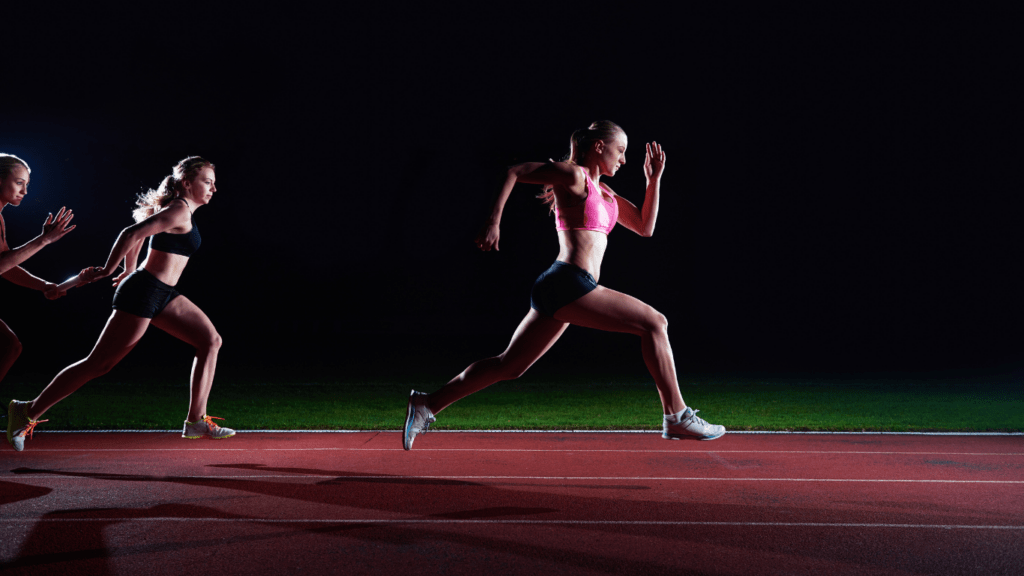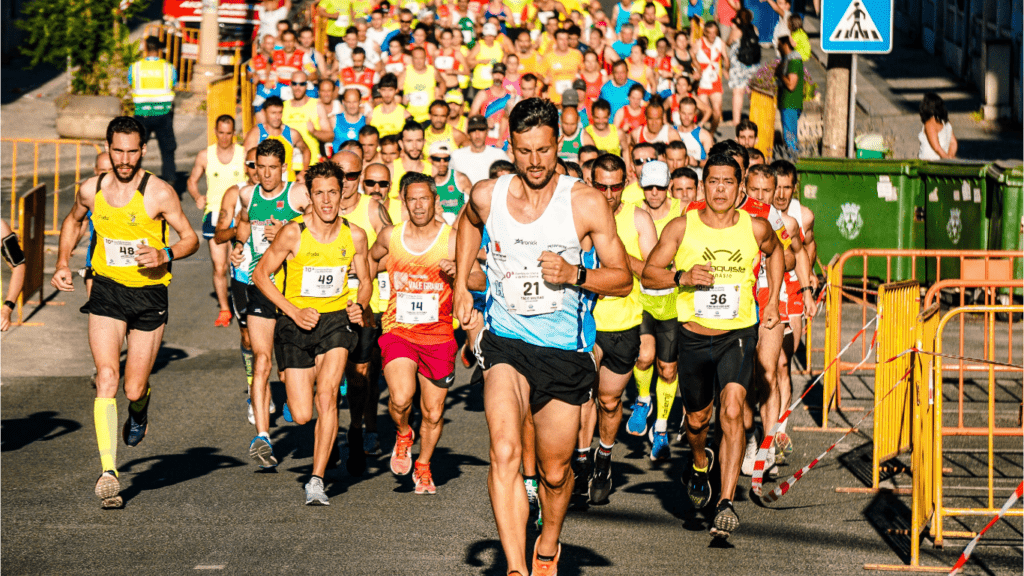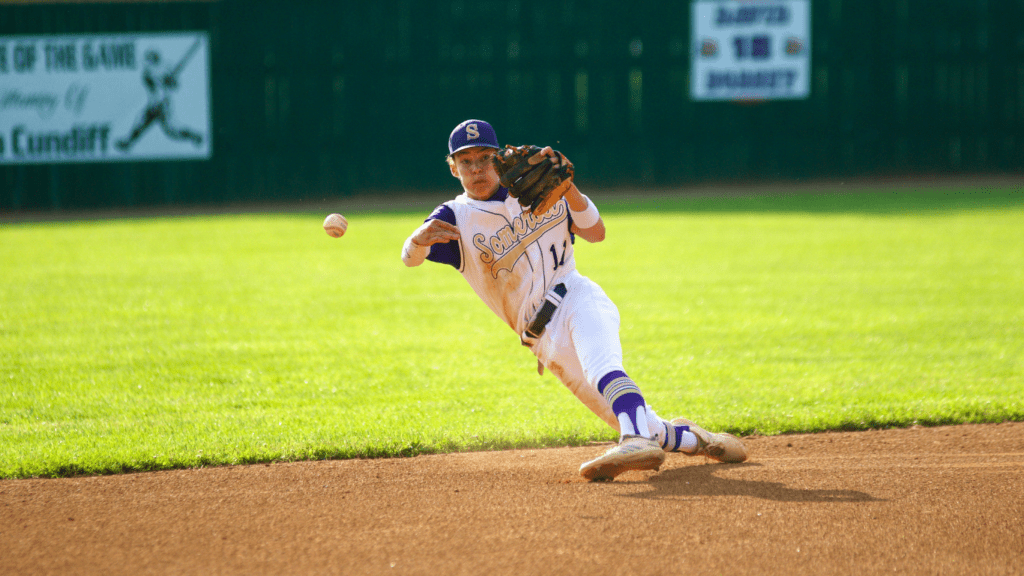When it comes to long-distance running, it’s not just about logging miles—it’s about running smarter. Two key factors that can make or break your performance are stride length and stride frequency. These elements work together to determine your efficiency, speed, and endurance, but finding the right balance can feel like cracking a complex code.
Understanding Stride Length And Stride Frequency
Stride length and stride frequency determine running efficiency and play a pivotal role in distance running performance. Each aspect brings unique advantages, and understanding them is essential for fine-tuning technique.
Definitions And Key Differences
Stride length measures the distance covered in one step, from the toe-off of one foot to the toe-off of the opposite foot. Taller runners or those with powerful extensions tend to naturally exhibit longer strides.
Stride frequency, also called cadence, refers to the number of steps taken per minute. A higher stride frequency means quicker turnover rates, typically favored by runners focusing on conserving energy over extended periods.
The key difference lies in their effects on pace and energy expenditure. Longer strides allow covering more ground with fewer steps but can strain muscles if overextended. Higher frequency maintains consistent effort but requires efficiency to prevent quick fatigue.
Importance In Long-Distance Running
- An optimal balance between stride length and frequency enhances endurance and minimizes energy loss.
- Overemphasizing stride length can lead to inefficient biomechanics, while an excessively high frequency may cause early fatigue due to inefficient form.
- Runners with a balanced stride length and frequency maintain better momentum over long distances. For example, elite marathoners usually sustain higher cadences (170-180 steps per minute) with moderate stride lengths.
- This approach helps reduce impact forces while promoting consistent pacing.
Benefits Of Optimizing Stride Length

Optimizing stride length plays a key role in improving performance for long-distance runners. Finding the right length ensures efficient movement while reducing unnecessary energy expenditure or physical strain.
Enhancing Efficiency
An optimized stride length increases running efficiency by minimizing wasted energy. Covering more ground per step reduces the total number of strides needed over a distance, maintaining forward momentum without compromising form. For instance, runners with a stride length tailored to their biomechanics achieve smoother gait cycles, which helps sustain speed for longer periods. This adjustment also improves oxygen utilization, critical for endurance events.
Preventing Injuries
The right stride length prevents injuries caused by overstriding or poor mechanics. Overextending strides often leads to excessive heel striking, increasing impact forces on joints and muscles like the quadriceps. In contrast, an optimal stride length ensures neutral foot placement under the body, lowering the risk of common injuries like shin splints or knee pain. Proper stride alignment also promotes balanced muscle engagement, reducing strain on specific areas over long distances.
Advantages Of Focusing On Stride Frequency
Increasing stride frequency enhances running efficiency and durability, especially in long-distance events. Focusing on this element allows runners to maintain rhythm and reduce energy loss over extended periods.
Maintaining Consistency Over Distance
Higher stride frequency supports a steady pace during long runs by creating a consistent turnover rate. Maintaining cadence reduces the chance of fatigue from uneven energy expenditure. Marathon runners often sustain 170-180 steps per minute to balance effort and efficiency, which helps them conserve strength. A consistent frequency also lowers the likelihood of losing momentum on challenging terrains like hills or uneven surfaces.
Reducing Impact On Joints
Enhanced stride frequency minimizes the force exerted on joints by promoting shorter, quicker steps. Short ground contact times reduce the stress transferred to the knees, ankles, and hips during each stride. Studies show that increasing cadence by 5-10% can lower joint load while maintaining or improving performance. This adjustment helps prevent repetitive strain injuries like plantar fasciitis or runner’s knee, ensuring long-term durability for frequent runners.
How To Fine-Tune Your Stride For Better Results
Running efficiency improves with precise adjustments to stride mechanics, length, and frequency. Balancing these elements optimizes endurance, reduces fatigue, and minimizes injury risk.
1. Assessing Your Current Stride Mechanics
I analyze my running form by recording videos during runs or using gait analysis tools. This helps me identify issues like overstriding, improper foot placement, or inconsistent cadence. Tracking stats like stride length and cadence through GPS watches or smartphone apps provides specific data for targeted improvements. Observing how my mechanics change over different paces and distances also clarifies areas needing attention.
2. Techniques To Adjust Stride Length
I focus on natural adjustments to increase stride length while maintaining proper form. Drills like bounding or A-skips help improve my hip mobility and leg extension without overstriding. Strengthening my glutes and hamstrings through exercises like lunges and deadlifts enhances my ability to achieve a more powerful push-off, increasing stride length efficiently. Uphill intervals are also effective for practicing optimal stride length, as they encourage longer, controlled steps without excessive strain.
3. Strategies To Improve Stride Frequency
Boosting stride frequency involves training my cadence for consistent turnover. I use a metronome or cadence-focused playlists to align my steps with a desired rate, aiming for a range of 170-180 steps per minute during long runs. Incorporating strides or high-cadence intervals into my workouts reinforces quicker, shorter steps. Strength and mobility exercises, like ankle dorsiflexion or plyometrics, enhance my ability to transition between steps rapidly. Monitoring progress with cadence trackers enables me to measure improvements over time.
Tools And Technologies To Aid Performance
Leveraging modern tools enhances long-distance running by providing precise data and actionable insights. These technologies streamline the process of improving stride mechanics and overall efficiency.
Wearables And Tracking Devices
Wearables offer real-time feedback on key running metrics like:
- stride length
- cadence
- ground contact time
Devices like GPS watches and running pods track distance, pace, and step frequency. Advanced products, including Garmin’s Foot Pod or Stryd Power Meter, analyze power usage, vertical oscillation, and form efficiency. Runners can use this data to pinpoint inefficiencies and adjust mechanics accordingly.
Mobile apps, often paired with wearables, collect, display, and analyze the gathered metrics. These apps, like Strava or Runkeeper, allow users to set cadence or pace goals and monitor progression over time. Using these tools together delivers a comprehensive picture of performance, aiding gradual improvements.
Professional Coaching And Gait Analysis
Expert coaching combines personalized advice with advanced stride analysis techniques. Coaches use real-time video recordings to evaluate running form, identifying misalignments like overstriding or poor foot strike patterns. These insights help find the right balance between stride length and frequency.
Gait analysis systems provide detailed biomechanical assessments. Tools like RunScribe or Dartfish capture data on joint angles, stride symmetry, and load mechanics. This deep analysis enables tailored adjustments to improve efficiency and prevent injuries. Partnering with professionals ensures that suggested changes align with individual biomechanics and long-term performance goals.



 Founder & Head Performance Strategist
Founder & Head Performance Strategist
